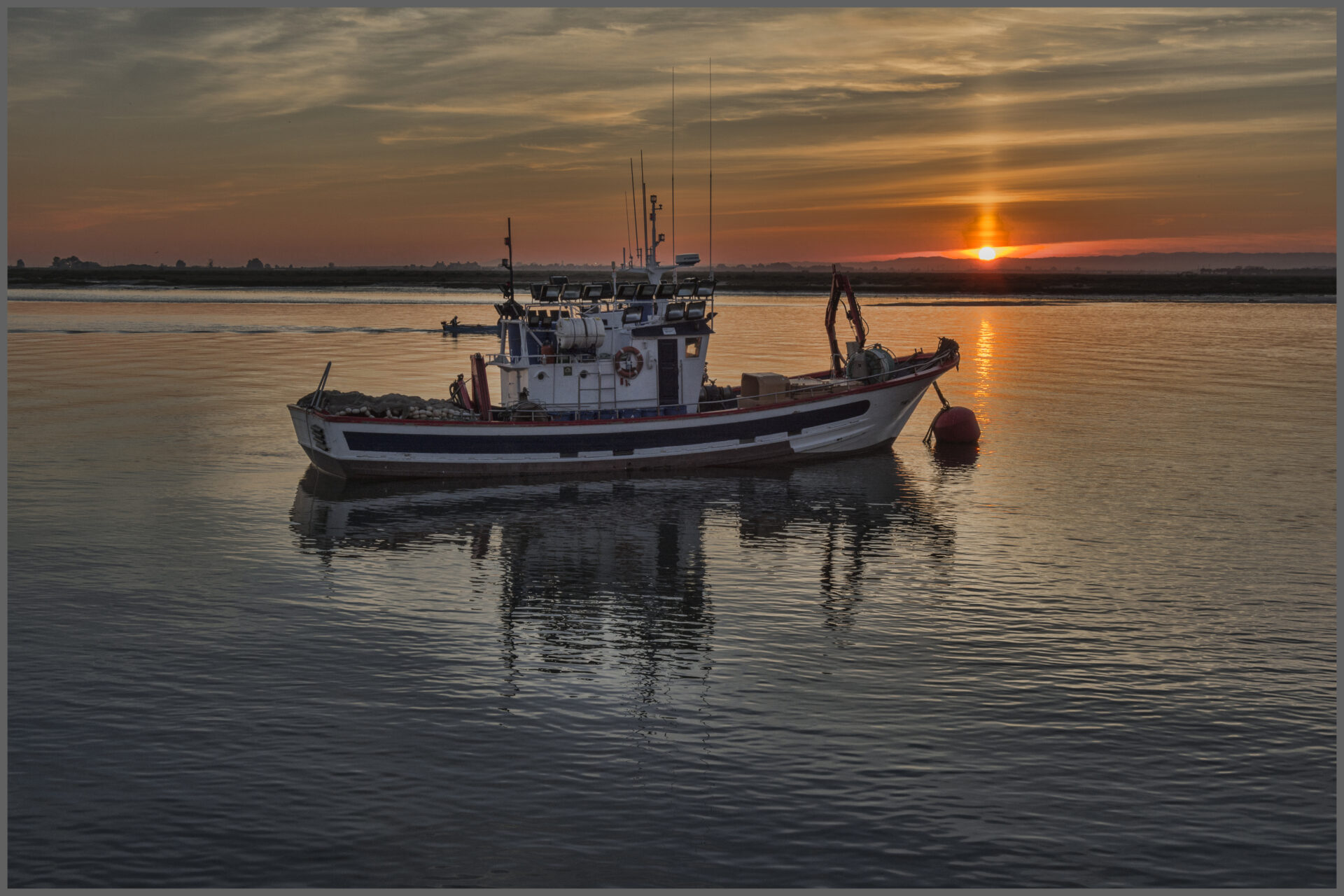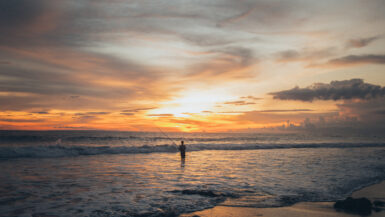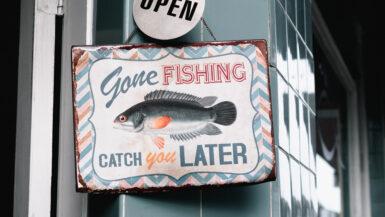Fishing in a river brings with it a unique set of challenges, but all of them can be easily overcome with the appropriate technique and tips. People have been fishing rivers for centuries, and the knowledge gained along the way can be applied to make your river fishing experiences both rewarding and enjoyable. In this article we look at the various ways to fish in a river, from the different types of bait to the various techniques you can use to help maximize your chances of catching something. We’ll also delve into some of the important considerations you should keep in mind when fishing in a river, from safety to regulations. With this information at your disposal, you’ll be well on your way to becoming a competent and successful freshwater angler in no time!
Types of Freshwater Fishing
Freshwater fishing is a popular sport enjoyed by anglers of all levels of skill and experience. There are many different types of freshwater fishing to choose from, each offering its own unique set of challenges and advantages. From using bait to spin-fishing, here are the different types of freshwater fishing:
Bait Fishing
Bait fishing is the most traditional type of freshwater fishing. This involves using an artificial lure or live bait, such as worms, crickets, or artificial lures, to attract fish. A hook is attached to the bait and placed at the bottom of the river or lake in an area where fish are likely to be found.
Trolling
Trolling is a very effective technique for targeting larger game fish. It involves casting a line with a lure attached to it while the angler moves the boat or reaches a certain spot in the river. The boat’s movement causes the line to move through the water, attracting larger game fish like bass, walleye, and muskie.
Spin Fishing
Spin fishing is the practice of using a spinning rod and reel to cast a line into the water. This type of fishing is great for targeting smaller fish, such as panfish and trout. The spinning rod and reel allow for more precise casts and accuracy when trying to bait small fish.
Fly Fishing
Fly fishing is a sport that requires a special set of skills to master. This type of fishing requires the angler to cast a line into the water with an artificial fly attached to the end. This technique requires a lot of practice and skill, but it is often the most rewarding type of freshwater fishing.
Ice Fishing
Ice fishing is a type of freshwater fishing that can only be done during the wintertime when the water is frozen. This type of fishing requires special equipment such as an ice auger, fishing line and a jigging rod. Ice fishing allows anglers to fish in the depths of a lake or river during the coldest months of the year.
No matter what type of freshwater fishing you choose, there are plenty of tips and techniques to make your fishing trips successful. Be sure to do your research and practice the techniques that you learn to become a more experienced angler.
Choosing the Right Gear
River fishing requires some specific gear in order to be successful. The type of tackle you need depends on the species you are targeting. Here are some of the most important pieces of equipment for river anglers:
Fishing Rod and Reel
A good fishing rod and reel is an essential piece of equipment for river fishing. Look for a rod and reel that is designed for the type of fishing you will be doing. For example, if you plan on fishing for smaller species like trout, a light- to medium-action rod and spinning reel is best. For larger species like bass, a medium- to heavy-action rod and baitcasting reel is preferable.
Lures and Bait
Lures and bait are essential for catching fish in rivers. Live bait like worms, minnows, and crickets are ideal for river fishing and can be found at most tackle shops. Artificial lures, such as spinners and crankbaits, are also effective when fishing rivers. Choose lures and bait that are designed for the type of fish you are targeting.
Nets and Landing Gear
Having a net and landing gear is essential for safely and quickly landing your catch. A landing net with a collapsible handle is ideal for river fishing, as it is easy to carry and store. Landing gloves are also helpful for preventing the fish from slipping out of your hands and for protecting your hands from the fish’s sharp fins.
Clothing and Footwear
When fishing in a river, it is important to wear the appropriate clothing and footwear. Waders or chest waders are ideal for keeping you dry and warm. Make sure to choose a pair that fits properly and is designed for the type of water you will be fishing in. Footwear should be non-slip and waterproof. A good pair of polarized sunglasses can also help improve your visibility while fishing in rivers.
By having the right gear, you will be able to make the most out of any river fishing trip. So, be sure to invest in the right equipment to ensure optimal results.
Selecting the Right Lure
Fishing in a river often means targeting a variety of different species, depending on the location and season. Before selecting lures, anglers should do some research to identify the most common fish species in the river they plan to fish. This will help ensure that they have the right type of lures in their tackle box. Knowing which species they are targeting will also help anglers determine the size, type, and color of lures they should use. For example, if the river is known for bountiful bass, anglers may want to opt for larger spinnerbaits or crankbaits.
Consider the Water Conditions
River fishing can be a challenging endeavor, especially when conditions vary from day to day. A lure that works well in murky, fast-moving waters may not be ideal for clear, slow-moving pools. It’s important for anglers to pay attention to the water clarity, current, and bottom composition before selecting lures. This will help them choose the right style of lure for the situation.
Match the Baitfish
The type of baitfish in the river can often dictate the style of lures that will be effective. Anglers should pay close attention to the color, size, and type of baitfish in the area they plan to fish. This will tell them what kind of lures they should use to imitate the available baitfish. Matching the size and color of the baitfish is essential for anglers hoping to catch fish in the river.
Choose the Right Hooks and Attractants
Hooks and attractants are just as important as lures when it comes to river fishing. Anglers should choose hooks that are small enough to fit the baitfish they plan to use. Additionally, they should consider using attractants like scents and oils to draw fish in. These can be applied to soft and hard baits for better success. Providing a strong smell or taste in the water can often make all the difference in the fishing experience.
Experiment With Different Lures
When it comes to river fishing, it’s important to experiment with different lures. Even experienced anglers may be surprised by what works in certain conditions. In some cases, anglers may need to combine lures and techniques to get the best results. It’s a good idea to have a variety of lures available to guarantee success. By taking the time to select the right lures, anglers can improve their fishing experience and increase their chances of catching fish.
Understanding the Water Conditions
One of the first steps to fishing in a river is recognizing different types of rivers and understanding the water conditions in each. There are four main types of rivers: slow-moving, moderate-moving, fast-moving and whitewater. Slow-moving rivers usually have a wide channel with a slanted bank and a low current, while fast-moving rivers have a narrower channel and the water moves more quickly. Moderate-moving rivers are somewhere in between, with some sections moving slowly and some sections moving quickly. Whitewater rivers have turbulent and unpredictable currents due to the presence of rocks, boulders, and debris.
Learning the Aquatic Biodiversity
A good freshwater angler also has to become familiar with the aquatic biodiversity in the river. Different types of fish inhabit different types of rivers, so understanding the different types of fish that inhabit the river is an important factor in successful fishing. Fish that inhabit slow-moving rivers, such as catfish, bass, and carp, are usually found in deeper pools, near the edges of the river, and in backwaters and eddies. Fast-moving rivers, on the other hand, feature species like trout, salmon, and shad. Knowing the type of fish in a given river will help to determine the types of lures, baits, and techniques that should be used when fishing.
Study the River’s Flow
In addition to recognizing the different types of rivers and the fish that inhabit them, anglers must also learn to observe the current and flow of the river. The flow of the river can be affected by weather, tides, and other environmental factors, so studying the flow of the river before fishing is essential. In some cases, it can be useful to use a depth sounder to get an accurate reading of the river’s flow and depth. Knowing the river’s flow, depth, and speed can help the angler find prime fishing spots, as well as determine the most effective lures to use.
Reading the Water
Finally, serious anglers should learn to read the water for clues about where the fish are likely to be. In most cases, fish will stay in areas of the river where there is shelter from predators, food, and oxygen. Identifying these areas requires observational skills and an understanding of the structure of the river. Rocks and other obstructions create eddies or backwaters that provide shelter and current breaks where the oxygen level is higher. Knowing where to look for these shelters can give anglers an edge when it comes to fishing.
Location and Casting
Fishing in a river requires some specific gear and supplies. A good quality spinning rod or fly rod is essential for a successful fishing expedition. An adjustable reel with a smooth drag system is also recommended. Fishing line should be selected depending on the size of the fish and type of lures or bait that will be used. Other supplies that may be needed include lures, tackle, bait, hooks, sinkers, bobbers, nets, and a stringer.
River Types and Locations
Freshwater anglers should be aware that rivers come in various types and locations. Some rivers are slow moving, while others are fast moving with rapids. It is important to recognize the type of river and find an appropriate spot to fish. Researching the location of a river can help to identify the best places to cast a line. Popular river fishing spots may include the edge of a lake or pond, riverside eddies and pools, and beneath a bridge or dam.
Casting Techniques
Casting is the key to successful river fishing. The goal of casting is to get the lure or bait to a spot where the fish are likely to be. Beginner anglers should practice casting in an open area away from the banks of the river. Start by using short and slow casts until the lure is placed at the desired distance and location. Lures should be allowed to sink for a few seconds at the start of the cast. For the best results, move the lure along the bottom of the river in order to attract the fish.
What to do After a Catch
Once you have reeled in your catch, it’s time to remove the hook. Before trying to do this, make sure the fish is not attached to the line too tightly. Use a pair of pliers or needle-nose pliers to gently remove the hook. This can be tricky, so be careful not to harm the fish in the process.
Measure the Fish
If you are required to measure the fish before releasing it, you will want to do this before taking it out of the water. This can be done with a ruler or measuring tape. Make sure to measure carefully to get an accurate reading.
Wait for the Fish to Recover
It’s important to wait for the fish to recover from being hooked before attempting to release it back into the water. If the fish is not moving, you may need to gently move it back and forth in the water to help it regain its strength.
Release the Fish
Once the fish is ready to be released, you can slowly and carefully lower it back into the water, making sure to support its body as much as possible. Don’t forget to remove your hook if it’s still attached to the fish.
Clean Up
Cleaning up after a catch is important in order to maintain a healthy environment for the fish. Make sure to throw away any bait, lures, or broken fishing equipment in the proper trash receptacles, and never leave your fishing line in the water.
The River’s Bounty Awaits
Fishing in rivers provides a unique and unforgettable experience for anglers. With a little bit of knowledge and patience, the rewards can be great. Whether you’re a novice or an experienced angler, some basic tips can help ensure that you have the best chance at success. Understanding the equipment, proper water wading techniques, and the best bait will help make any fishing trip more successful. With the right preparation, rivers can be a great place to catch a variety of fish–the possibilities are endless. So get out there, be patient, and enjoy the fishing experience.





Leave a reply